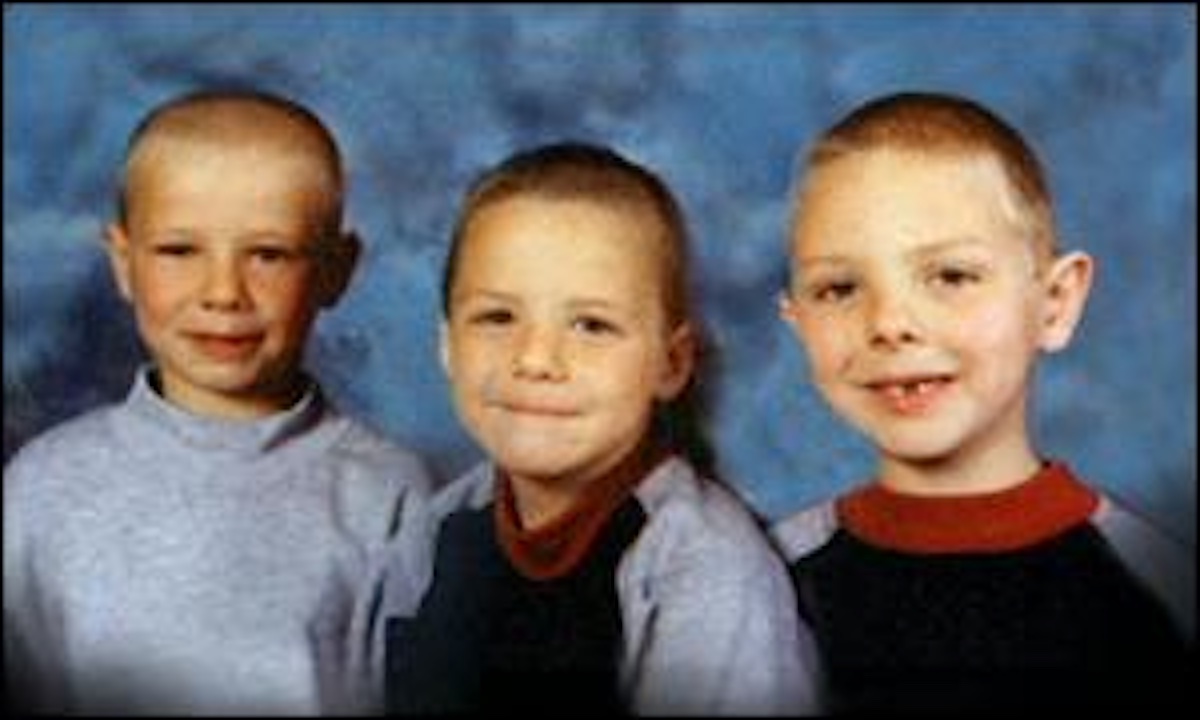
Balloons were released at a gathering on the 25th anniversary of the murders of the three Quinn boys in Ballymoney.
Jason (8), Mark (9), and Richard (10) were killed in a unionist paramilitary firebomb attack at the height of the Drumcree stand-off on July 12, 1998.
Dozens of people gathered to release the balloons during the remembrance event on the Carnany estate in the County Antrim town.
The three boys were murdered in their beds in the sectarian petrol bomb attack. A children’s park and memorial garden now mark the place where their lives were ended in the fire set by a UVF gang.
On Wednesday morning, along with some members of the boys’ family, dozens in the community came out to release balloons into the sky.
Though they came from a Catholic background, they attended a local state school and were fully integrated into the mainly Protestant community. Richard had even helped to build the local bonfire, kicking a ball around with his friends at the event before heading home around midnight.
The boys’ father had been a Protestant, and Christine, a Catholic, had been bringing them up as such. But she was concerned the house could be attacked that night and had stayed up to keep an eye out until 2.30 am.
An older brother – Lee (13) – had gone to stay with his granny Irene in Rasharkin on the night of the fire.
At around 4.30 am that morning, a car pulled up outside the house, and a petrol bomb was thrown through the living room window.
Black smoke and flames engulfed the family home. Unable to locate the boys and thinking they had escaped, Christine, her then-partner, and a family friend fled the blaze.
From inside, the boys’ panic was audible. Richard cried out: “I’m in the corner. I can’t find the stairs.” Jason: “My feet are burning, my feet are burning.” And then silence.
The Quinn brothers’ deaths marked a terrifying and violent peak in the anti-Catholic hate of the era. The most recent Drumcree dispute was entering its fourth year. At the beginning of July, Catholic churches had been damaged in overnight arson attacks in Belfast and across counties Antrim, Down, Armagh, and Tyrone. Pitched battles raged in Belfast. A couple and two young sons were also treated for smoke inhalation after their home was set alight by a petrol bomb in Derry.
Less than 48 hours before the attack, loyalists had erected a barricade amid disturbances on the main road close to the Carnany estate where the Quinns lived. Some Catholic families living in the estate had even been sent bullets in the post warning them to get out.
Sinn Féin representative for North Antrim Philip McGuigan was a young party activist in the area at the time and remembers a particularly tense atmosphere in 1998.
“People were actually sitting up at night; residents were protecting the parish center, the GAA club rooms, the chapel, and their own property,” he told the Belfast Telegraph.
“The year before, loyalists had kicked to death a member of the RUC over the parading issue, so tensions were really high.
“People undoubtedly knew something tragic was going to happen. That was the sense people had from the escalation.”
When news began to filter through of the horror that had unfolded in Ballymoney, international media headed for north Antrim to try to comprehend the atrocity.
“You are never going to forget hearing the details of three young children losing their life in a fire a number of miles away from where you live,” said Mr. McGuigan.
“Even with the passage of time, it’s hard to fathom that three young children could be burned alive in their own home while asleep purely because of sectarianism.”
In the aftermath of the hugely traumatic event, Christine decided to have the children buried in the Catholic graveyard in Rasharkin.
She told the press at the time: “After what Protestants have done to my family, I couldn’t bear to think of them lying in Protestant graves.
“The kids wouldn’t even know what the Troubles were about. They weren’t old enough to know.”
The murders had a numbing effect on the tensions at Drumcree. The following day, Orange Order chaplain William Bingham told a congregation it had been an “atrocious act.”
“A 15-minute walk down the Garvaghy Road would be a very hollow victory because it would be in the shadow of the coffins of three small boys who wouldn’t even know what the Orange Order was about,” he said.
Only one person was convicted in connection with the murders. Garfield Gilmour (23) was initially found guilty of murder and sentenced to life imprisonment, but in 2000, an appeal reduced the charge to manslaughter.
Gilmour had driven two other men – whom he had named as UVF-linked Raymond Parke and Johnny McKay – to the Quinns’ home in Carnany, where they had hurled a 2-liter bottle filled with petrol into the home. The Ballymoney man served 14 years in prison.
![[Irish Republican News]](https://republican-news.org/graphics/title_gifs/rn.gif)
![[Irish Republican News]](https://republican-news.org/graphics/title_gifs/harp.gif)

